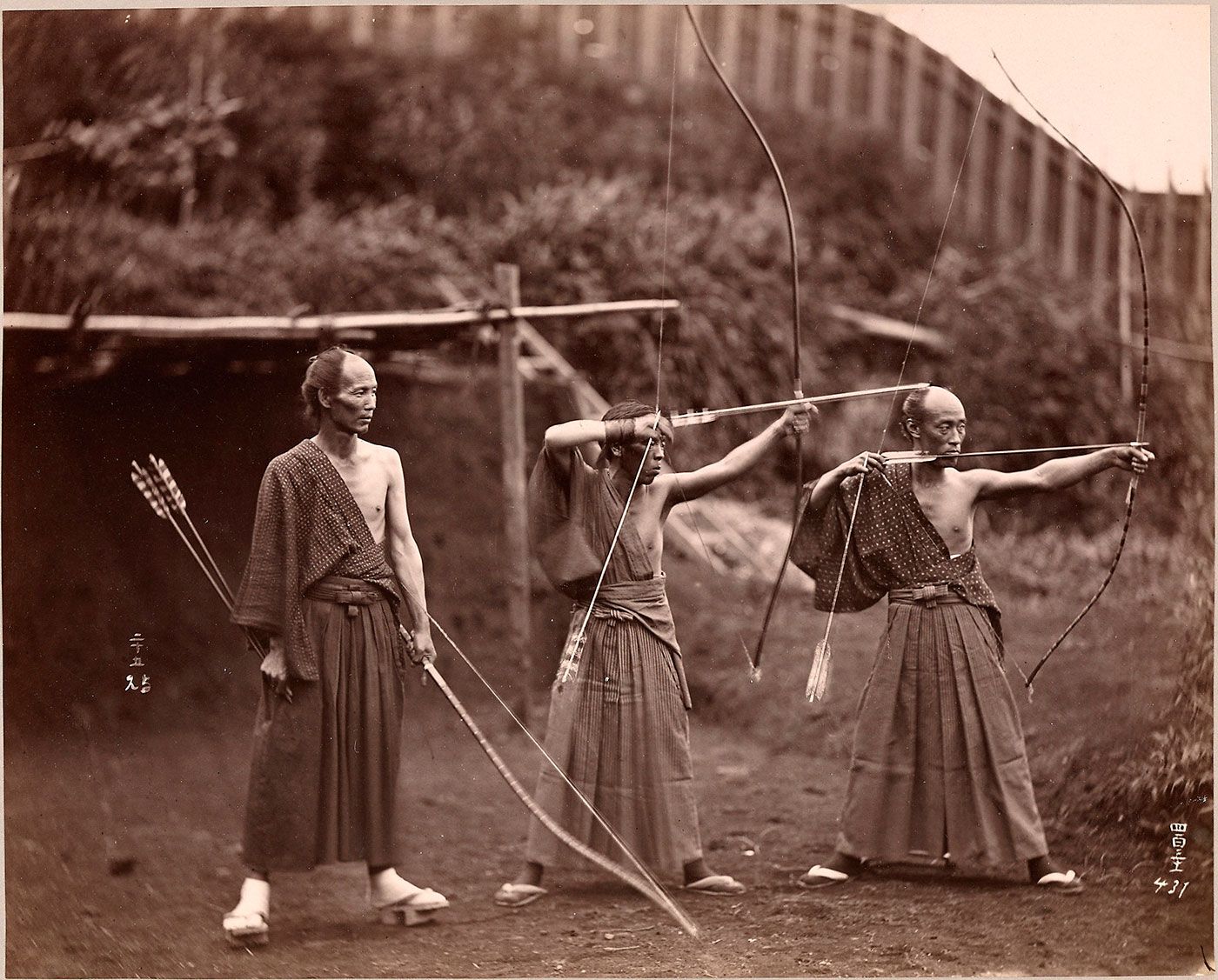Herrigel was taught by a legendary Kyudo master named Awa Kenzo. Kenzo was convinced that beginners should master the fundamentals of archery before attempting to shoot at a real target and he took this method to the extreme. For the first four years, Herrigel was only allowed to shoot at a roll of straw just seven feet away. (1) When he was finally allowed to shoot at targets on the far end of the practice hall, Herrigel’s performance was dismal. The arrows flew off course and he became more discouraged with each wayward shot. Herrigel was convinced his problem was poor aim, but Kenzo replied that it was not whether you aimed, but how you approached your goal that determined the outcome.
Archery, Blindfolded
After night had fallen, the two men returned to the courtyard where the practice hall was located. Kenzo walked over to his normal shooting location with the target hidden somewhere out in the night. The archery master settled into his firing stance, drew the bow string tight, and released the first arrow into the darkness of the courtyard. Kenzo paused for a moment and then said, “Come to see me this evening.” Immediately, Kenzo drew a second arrow and again fired into the night. Herrigel jumped up and ran across the courtyard to inspect the target.
Everything Is Aiming
Great archery masters often teach that “everything is aiming.” Where you place your feet, how you hold the bow, the way you breathe during the release of the arrow – it all determines the end result. In the case of Awa Kenzo, the master archer was so mindful of the process that led to an accurate shot that he was able to replicate the exact series of internal movements even without seeing the external target. This complete awareness of the body and mind in relation to the goal is known as zanshin. Zanshin is a word used commonly throughout Japanese martial arts to refer to a state of relaxed alertness. Literally translated, zanshin means “the mind with no remainder.” In other words, the mind completely focused on action and fixated on the task at hand. Zanshin is being constantly aware of your body, mind, and surroundings without stressing yourself. It is an effortless vigilance. In practice, though, zanshin has an even deeper meaning. Zanshin is choosing to live your life intentionally and acting with purpose rather than mindlessly falling victim to whatever comes your way.
The Enemy of Improvement
In other words, the battle does not end when you win. The battle only ends when you get lazy, when you lose your sense of commitment, and when you stop paying attention. This is zanshin as well: the act of living with alertness regardless of whether the goal has already been achieved. We can carry this philosophy into many areas of life.
Writing: The battle does not end when you publish a book. It ends when you consider yourself a finished product, when you lose the vigilance needed to continue improving your craft. Fitness: The battle does not end when you hit a PR. It ends when you lose concentration and skip workouts or when you lose perspective and overtrain. Entrepreneurship: The battle does not end when you make a big sale. It ends when you get cocky and complacent.
The enemy of improvement is neither failure nor success. The enemy of improvement is boredom, fatigue, and lack of concentration. The enemy of improvement is a lack of commitment to the process because the process is everything.
The Art of Zanshin in Everday Life
We live in a world obsessed with results. Like Herrigel, we have a tendency to put so much emphasis on whether or not the arrow hits the target. If, however, we put that intensity and focus and sincerity into the process – where we place our feet, how we hold the bow, how we breathe during the release of the arrow – then hitting the bullseye is simply a side effect. The point is not to worry about hitting the target. The point is to fall in love with the boredom of doing the work and embrace each piece of the process. The point is to take that moment of zanshin, that moment of complete awareness and focus, and carry it with you everywhere in life. It is not the target that matters. It is not the finish line that matters. It is the way we approach the goal that matters. Everything is aiming. Zanshin. This article was originally published on JamesClear.com. FOOTNOTES Featured photo credit: Kalvicio de las Nieves via flickr.com
